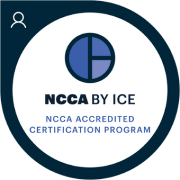- Get Certified
- Certification Process
- Subspecialties and FPDs
- Focused Practice Designations
- Anesthesiology Critical Care Medicine
- Emergency Medical Services (EMS)
- Health Care Administration, Leadership, & Management (HALM)
- Hospice and Palliative Medicine
- Internal Medicine – Critical Care Medicine
- Medical Toxicology
- Neurocritical Care
- Pain Medicine
- Pediatric Emergency Medicine
- Sports Medicine
- Undersea and Hyperbaric Medicine
In-Training Exam (ITE)
|
|
Dates & Fees |
| 2025 Exam Dates | February 25 – March 1, 2025 |
| 2026 Exam Dates | February 24 – 28, 2026 |
| Exam Fee* | $160 |
About the ITE
Eligibility
The ABEM In-training Exam (ITE) is available to:
- Physicians enrolled in EM residency programs accredited by the Accreditation Council for Graduate Medical Education (ACGME) or Royal College of Physicians and Surgeons of Canada (RCPSC)
- Physicians enrolled in ABEM-approved EM/Anesth, EM/FM, EM/IM, EM/IM/CCM, and EM/Peds combined training programs
- Physicians who have advance-matched into an ACGME-accredited EM program
ITE participation requires attestation from the program director during the annual resident survey. Registration for residents begins in December. See the Policy on ITE Accessibility for more information regarding eligibility.
The program’s ACGME accreditation decision must be made on or before November 1 of the year prior to the exam administration in order for its residents to be eligible to take the ITE. Program directors and authorized faculty of participating programs can access ITE registration information through the ABEM website in early December. Participating residency programs must pay the examination fee for each resident registered to take the ITE. ABEM does not communicate directly with residents in this process.
Prepare Your Program
How to prepare your program for the ITE:
- Log in to your ABEM Portal and register your program for the ITE. This includes paying the exam fee and granting score access to additional faculty.
- Before the exam, do a tech check on your systems to ensure they can deliver the exam successfully. Provide your IT team with this minimum systems requirements information and video tutorial on set up.
Exam Content
Questions are drawn from the EM Model. The exam contains 225 multiple choice questions and takes about 4.5 hours to complete. All questions are written by a group of clinically active emergency physicians with special training in question writing. New questions undergo an extensive series of reviews, followed by field testing.
Medical Knowledge, Patient Care, and Procedural Skills
- 1.0 Signs, Symptoms and Presentations: 10%
- 2.0 Abdominal & Gastrointestinal Disorders: 7%
- 3.0 Cardiovascular Disorders: 10%
- 4.0 Cutaneous Disorders: 3%
- 5.0 Endocrine, Metabolic & Nutritional Disorders: 5%
- 6.0 Environmental Disorders: 2%
- 7.0 Head, Ear, Eye, Nose & Throat Disorders: 4%
- 8.0 Hematologic Disorders: 3%
- 9.0 Immune System Disorders: 2%
- 10.0 Systemic Infectious Disorders: 7%
- 11.0 Musculoskeletal Disorders (Non-traumatic): 3%
- 12.0 Nervous System Disorders: 6%
- 13.0 Obstetrics and Gynecology: 3%
- 14.0 Psychobehavioral Disorders: 2%
- 15.0 Renal and Urogenital Disorders: 3%
- 16.0 Thoracic-Respiratory Disorders: 7%
- 17.0 Toxicologic Disorders: 4%
- 18.0 Traumatic Disorders: 9%
- 19.0 Procedures & Skills: 8%
- 20.0 Other Components: 2%
- Total: 100%
Acuity Frames: Target (± 5%)
- Critical: 30%
- Emergent: 40%
- Lower Acuity: 21%
- None: 9%
Physician Tasks
For this dimension, the Board has assigned the following specific percentage weights to the Modifying Factor of age:
- Pediatrics: 8% minimum
- Geriatrics: 6% minimum
Results & Scoring
Programs ITE scores for all of their residents who took the exam. While there is no passing score, there is a strong relationship between scores on the ITE and Qualifying Exam. Physicians with higher ITE scores have a higher likelihood of passing the Qualifying Exam.
The exam is not designed for program evaluation, and the scores should not be used to compare programs or residents across programs.
Contact training@abem.org or call 517.332.4800, option 3 with any questions.



